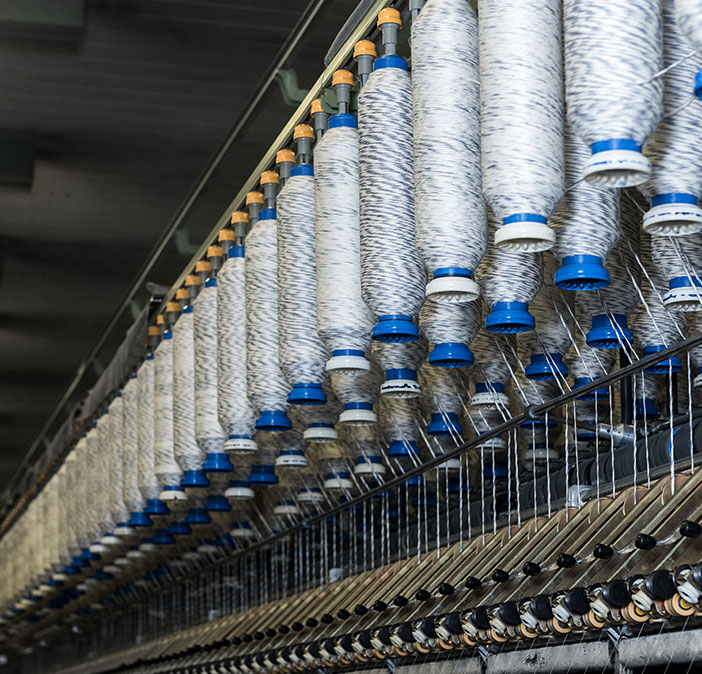
From fibre to yarn
The spinning process consists of a series of operations and stages to compact, align and progressively twist the textile fibres mechanically to form a yarn.
Spinning may require a range of increasingly complex production techniques when working to obtain high-quality yarns.
We dedicate passion and care to spinning textile fibres
As we have seen, spinning can be applied to different production techniques with the aim of producing and marketing high-quality yarns.
The various different types of fibre to be spun (cotton, wool, hemp, waste silk) require different spinning systems and machinery.

How to treat discontinuous and continuous synthetic and artificial fibres
Discontinuous and continuous synthetic and artificial fibres deserve separate chapters.
In the former case, the fibres are spun using systems similar to those used for the natural fibres that they are intended to imitate.
Continuous synthetic and artificial yarns, on the other hand, are made from a polymer viscose mass. Once dissolved in suitable solvents, this mass gives rise to an extrudable material, which is fed into the holes in the die. The resulting filaments are then stretched to give the molecules the right orientation.
See the other processes
Find out about the other types of processing to choose the textile fibre that best suits your needs.



